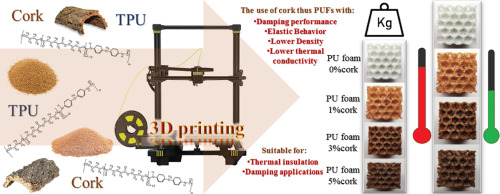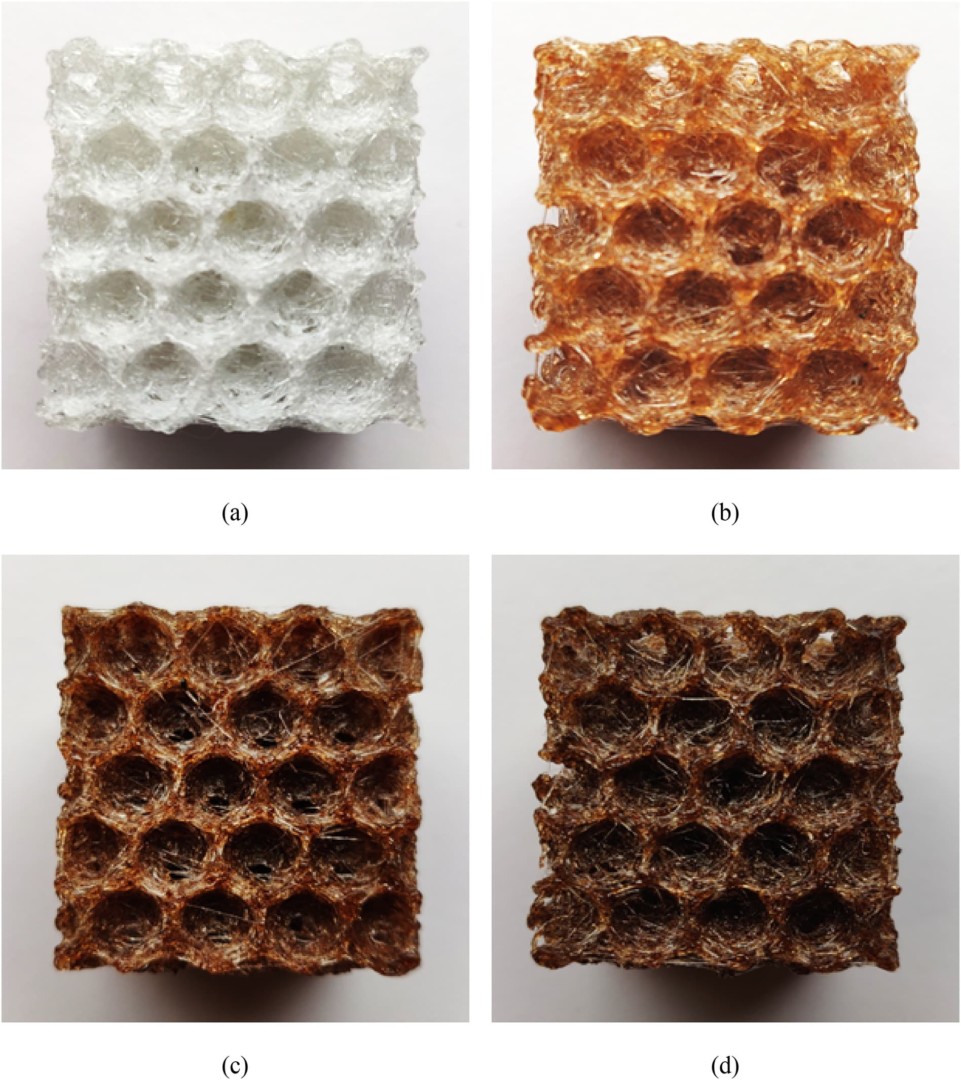In a paper published in the journal Science Direct, researchers from the University of Aveiro, Portugal, point out that research into 3D printed PU foams is plentiful. However, previous research has largely focused on a 3D printed foam’s cushion behavior or mechanical properties.
Now, these researchers from the Aveiro Institute of Materials and Department of Chemistry are using 3D printing technology to produce polyurethane foams but are focusing on how they could be used for thermal applications with enhanced mechanical properties.
To produce enhanced mechanical properties in the composite foams, the researchers incorporated cork. The researchers now believe their 3D printed foams could also be used for applications beyond thermal insulation. One such example is sound and impact absorption for aerospace and automotive industries.

Benefits of Adding Foam to PU Composites
The researchers used TPU (Pearlthane 11H94) and cork powder residue to produce the composites. This was mixed to create a filament and then 3D printed using an Anycubic Chiron 3D printer to produce PU forms. Of course, the benefit of using 3D printing is that complex geometries can be produced in a range of materials.
The next step was to test these forms and the researchers explain that they found that adding cork “decreased the density and thermal conductivity of the ensuing foams.”
As a result of the cork, the composites were also less stiff yet the thermal stability was not affected. The layer-to-layer bonding of the 3D prints was also reviewed by the researchers who found that the addition of cork did not jeopardize the performance of the PU foams.
As well as being used for thermal insulation, the researchers also believe that the elastomeric behavior of the 3D printed foams could have further applications, especially as 3D printing technology advances.
Source: Science Direct

License: The text of "Portugese Researchers 3D Print Cork and Polyurethane Composite Foams" by All3DP Pro is licensed under a Creative Commons Attribution 4.0 International License.